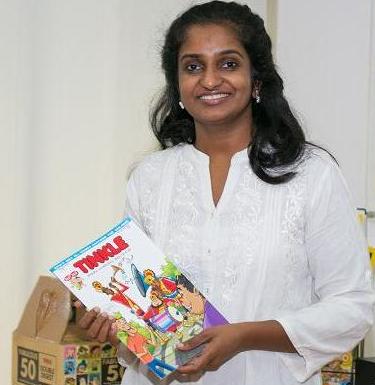A cheerfully jobless squarehead with three strands of hair; a forest ranger with a ‘sola topi’ which forever hides his eyes; a brain sharper than a needle and faster than a computer; a diminutive and wily Gaul who takes on the might of the Roman empire; a smart-talking child who has the most fun times with his toy tiger; superheroes who can fly, swing from webs, have access to the coolest technology at their fingertips or who possess the most marvelous mutant abilities, all on their quest for vigilante justice – we know these outrageous, eccentric individuals by different names – Suppandi, Shikari Shambu, Chacha Chaudhary, Asterix, Calvin and Hobbes, Superman, Spiderman, Batman and the X-Men.

What makes them tick? Moreover, what makes them last, years and decades? Physical appearance? Surely a factor, considering most of them sport distinctive looks or wear the most fanciful costumes that you wouldn’t find anywhere outside a comic book. Take Suppandi, Shikari Shambu or the various superheroes for instance. And yet, we have had fantastic-looking characters in comics that have faded away like a puff of smoke. So what is the pull?
There is something deeper that draws the reader, time after time, into the world of these characters, to their many adventures and foibles. Each character resonates to a need in the reader or echoes the time each was born in.
Let’s talk about the roster of characters, the many superheroes, from DC and Marvel. Some of these heroes were born as inspirational role models to people caught up in the horror and darkness of the two World Wars. So you have the seemingly invincible Superman or even Batman, the avenger masquerading as a playboy billionaire. Here are heroes that deliver swift justice; no matter how hopeless the situation, all under the cloak of anonymity. Or let’s look at the X-Men, mascots for social inclusion. They were created when the world was drawing closer, forcing disparate racial and social groups to live together, and if not in harmony then out of necessity. These heroes force the society they live in and that discriminates against them to engage and face the unknown that they fear. And yet, they never fully integrate into that society which seeks the comfort of majority.
If things get too dark, there are still Asterix and Calvin, creatures that accept no limits, no boundaries to what they can do. If Asterix uses his wiles and a helping of magic potion to irritate and quell the Romans, Calvin escapes into his world of imagination where he can be anyone and do anything he pleases.
Closer home, we have Suppandi, the simpleton who cannot hold on to a single job. Doesn’t he provide instant identification in a country addressing the constant problem of unemployment? And yet we take hope from Suppandi, for he is someone we would like to be, cheerful and confident always, in the face of what most would consider despairing circumstances. It would be awesome if there was no situation that could ever get us down. And then again in the words of Mr. Bachchan’s character in Namak Halaal, ‘English is a funny language’ that leaves most of us grappling with word usage or pronunciation. So when Suppandi fumbles over simple instructions or takes them literally, he makes it easy for us, for what do we laugh at hardest than follies we identify with? Or take Chacha Chaudhary, the character born in the early 1970s, who called to that dearest Indian aspiration of the time, to be smarter than the smartest. And then we have a Shikari Shambu, who just clicks with that hidden part of us. The part that would love to boast of our achievements (real or imaginary, mainly imaginary!), have people fawning over us without us ever doing a thing! Especially, when that same hidden part would love to duck and run away from any problems and have fate happily step in to make things all hunky-dory again.
Each of these themes call to a quirk, a desire of an individual or a need of a society in response to its times and circumstances; and yet, each of these characters has evolved with the changing needs of that very society. And this is important because comics’ characters have dual strengths. On one hand, with their impactful and iconic visuals, they make the evolution to any form smooth and even dynamic, taking on new life or new avatars with movies, animation, games, or any new technology the world throws up. And on the other hand, in a world that is fast changing, breathless, trying to catch up with newer forms of media consumption, the power of comics, as both a visual and literary device, remains relevant. As a medium of information dispersal that is instant, entertaining and thought-provoking, comics are invaluable. Examples being its use in spreading information about health, safety, education, finance, etc. Topics that would be otherwise considered too dry for mass consumption. It is quite true – a picture can speak more than a thousand words; and if a medium offers both, what more could one want?
At the core, it is about that ephemeral connection to all those wants and needs and desires that are floating around in this world. If comics as a medium is to remain relevant, if iconic characters are to live on, it is vital to have that ear to the ground. Most creators do it in their own ways – some constantly engage with people, others travel and observe; whatever works. At the end of the day, an idea can take any form, appear in any medium, provided you have a readership eager for it and the idea has the power to, if not change the world then at least engage with it.
(These are purely personal views of Tinkle Editor – Rajani Thindiath and AnimationXpress.com does not subscribe to these views)

